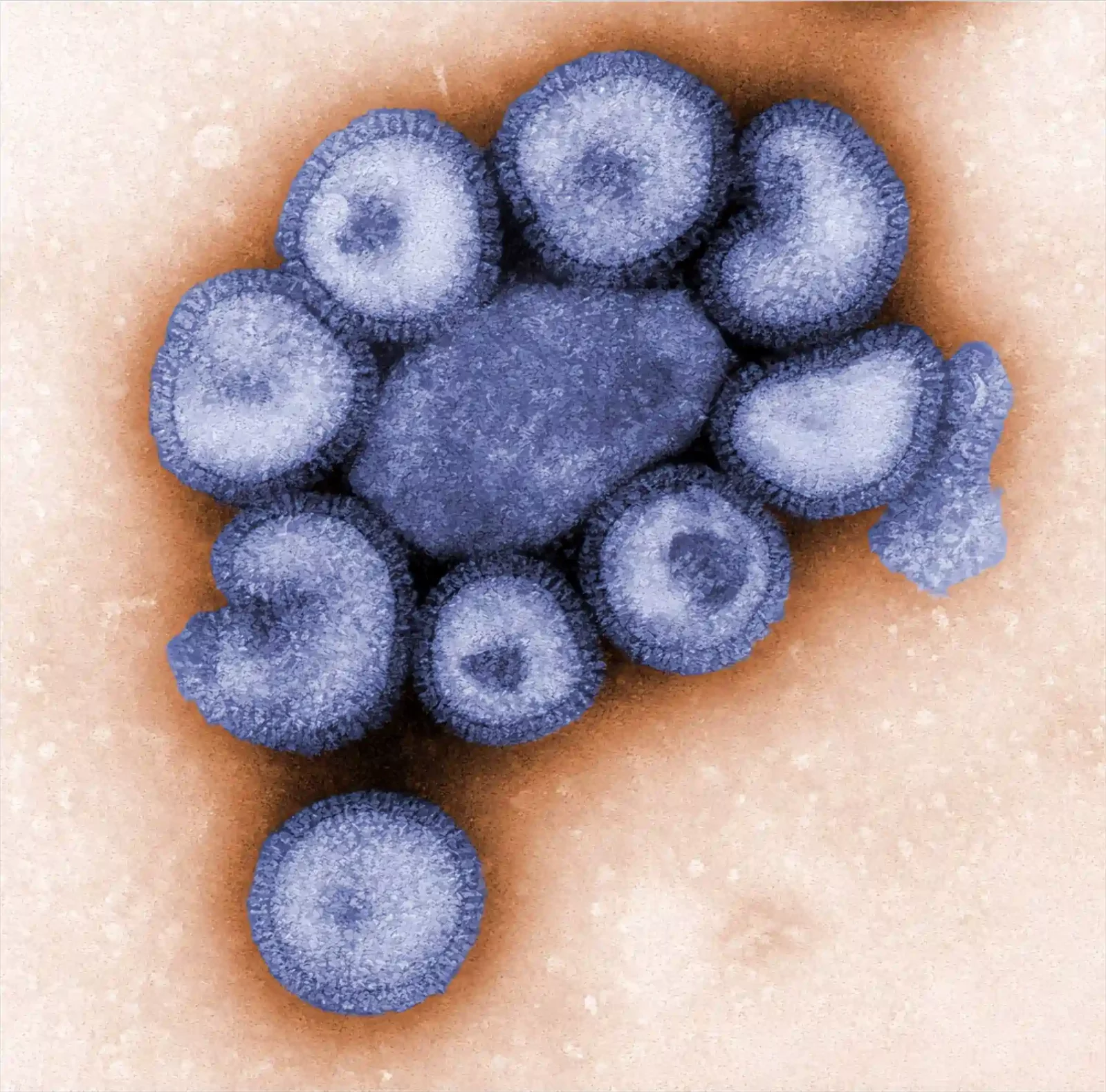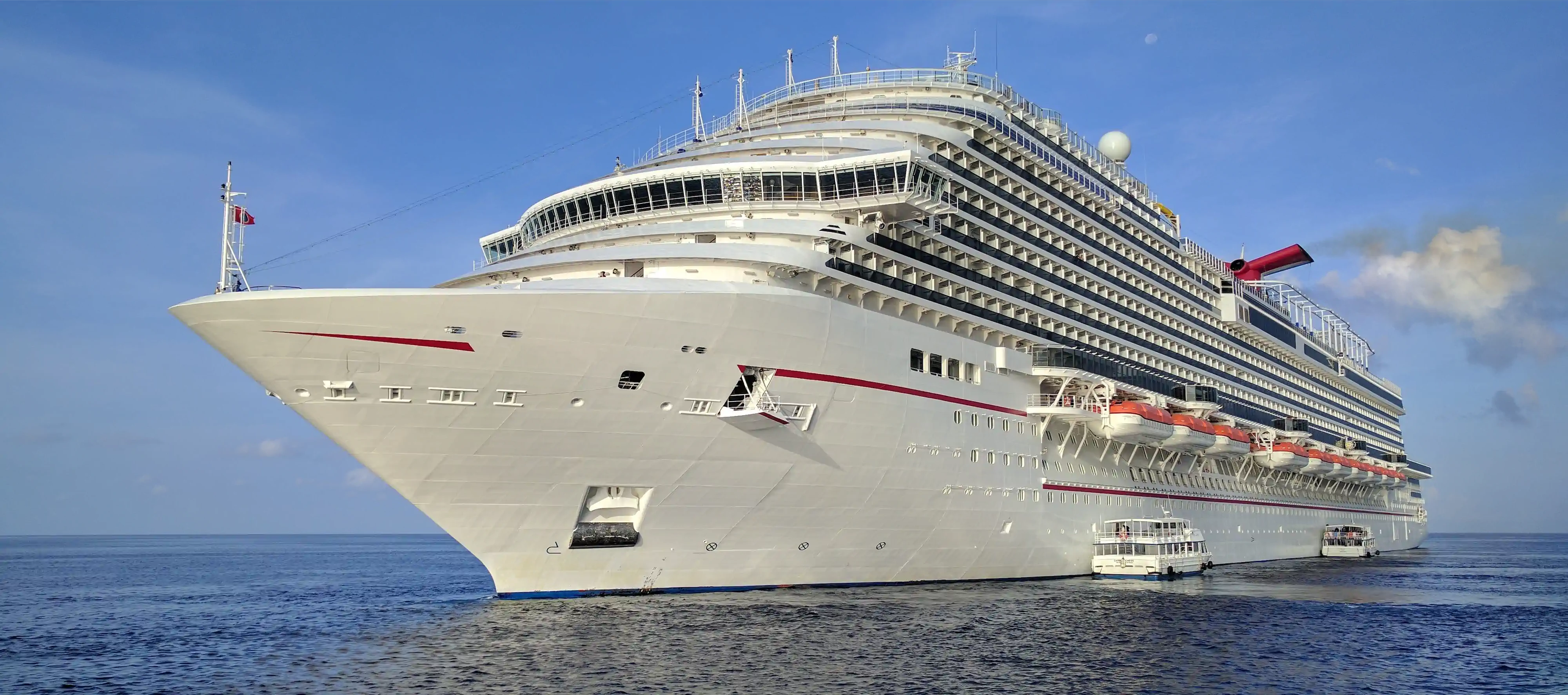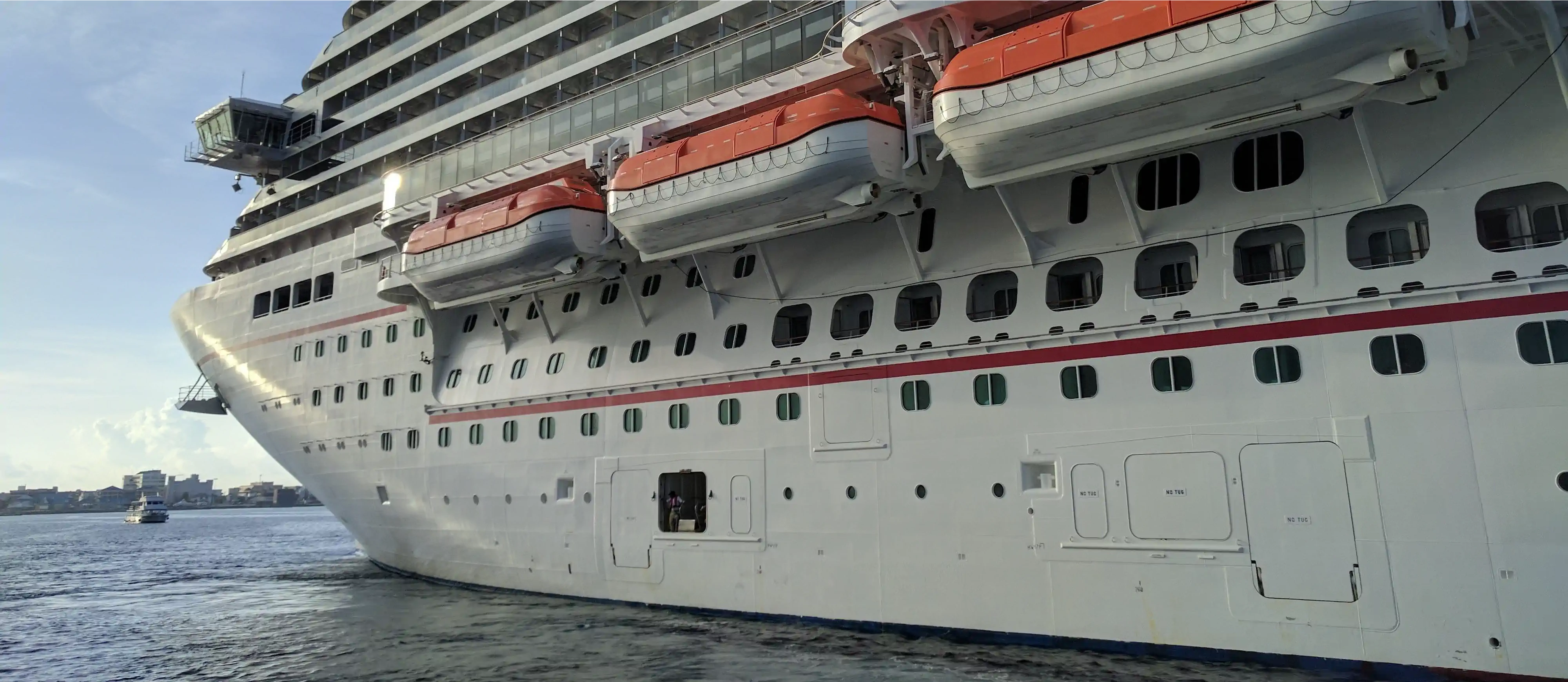About Influenza A
Commonly known as “the flu,” influenza is a contagious viral disease that attacks the respiratory system and can be spread from person to person.1 Symptoms can include coughing, sore throat, fever, headache, fatigue, chills and body aches.2 Although most cases of the flu are not lethal, as many as 650,000 people die of flu-related causes every year worldwide.3
Both the 1918 flu pandemic and the 2009 swine flu pandemic were caused by strains by H1N1, a subtype of Influenza A.4,5 Influenza A viruses can evolve quickly, and multiple different strains can emerge if an outbreak is not contained.6
Although most cases of the flu are not lethal, as many as 650,000 people die of flu-related causes every year worldwide.
Cruise Ships and Infectious Diseases
With thousands of people from all over the world onboard a ship for days or even weeks on end, cruise ships give respiratory illnesses such as the flu ample opportunity to spread unchecked.7,8 Passengers can pick up the flu while in port, and crew members can spread disease with alarming speed. Without the right protocols in place, infected crew and passengers who remain onboard during successive voyages can lead to protracted outbreaks.
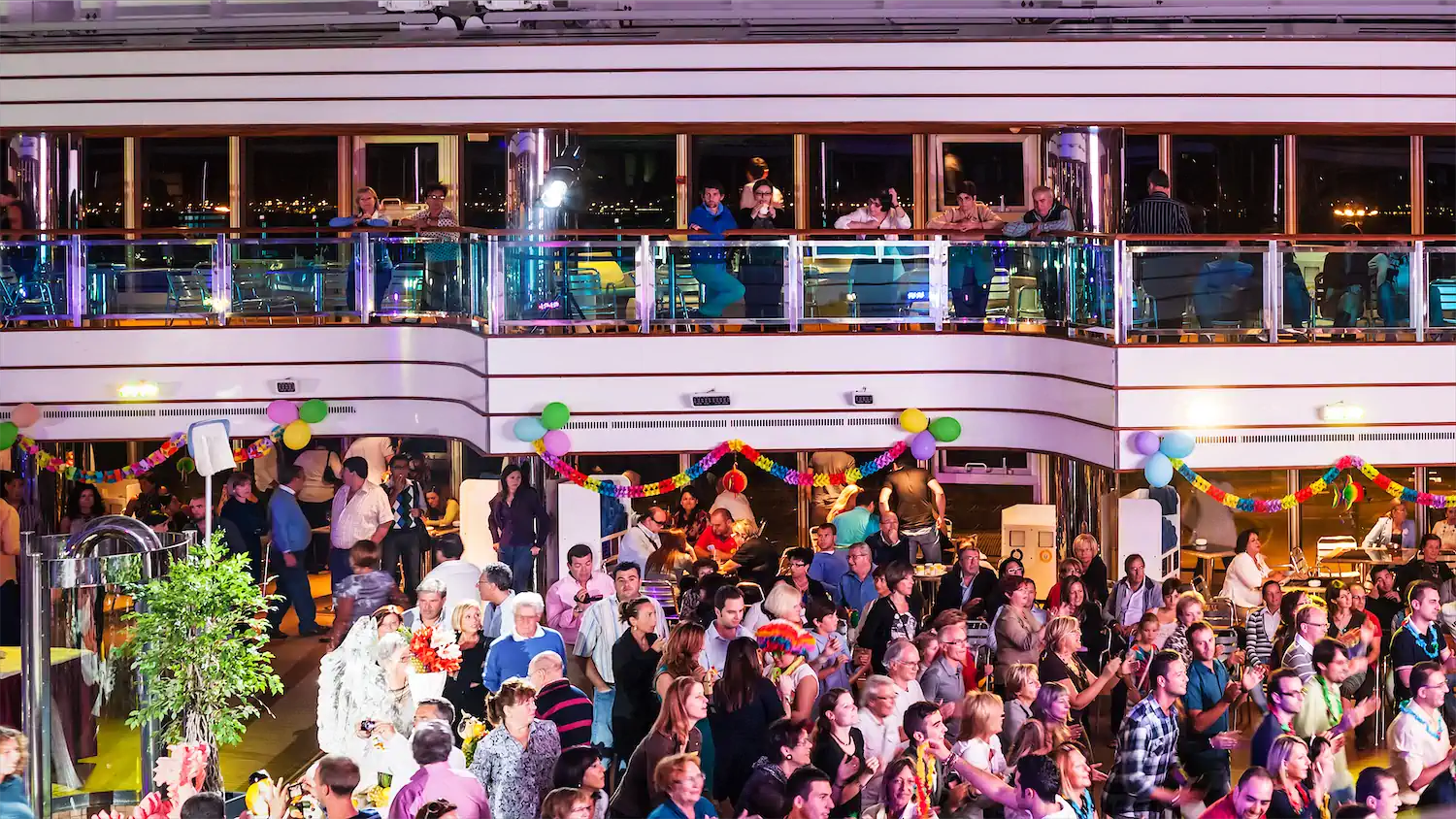
One study found that flu outbreaks can occur on cruise ships at any time of year, even when seasonal flu activity is otherwise minimal at destinations along the ship’s route.9 Furthermore, cruise ships often travel to tropical or semi-tropical destinations, where respiratory diseases may circulate year-round.10
Cruise ships have seen a substantial number of flu outbreaks through the years. In September 2000, an influenza outbreak was reported on the Fair Princess, traveling between Sydney and Noumea, New Caledonia with more than 1,500 people on board. A voluntary survey sent to passengers after the cruise found that more than a third had suffered from an influenza-like illness. Forty passengers were hospitalized, two of whom died due to flu-related complications.11 A study of a flu outbreak on the Dawn Princess in May 2009 found a dual outbreak of the H1N1 virus and another type of Influenza A. One in 14 people onboard was confirmed to have had the flu; two people onboard were infected with both strains.12
Since its emergence in late 2019, COVID-19 has put a spotlight on the unique threat of respiratory diseases on cruise ships; COVID-19 outbreaks were reported on over 40 cruise ships in 2020 alone. In May 2022, passengers from a Carnival Cruise ship were quarantined in Seattle after more than 100 passengers tested positive for the virus.13 According to a CDC investigation, the ship’s crew was understaffed and ill-equipped to deal with the outbreak, even two years into the pandemic. Passengers complained that those who tested positive for the virus had to wait many hours for meals, weren’t properly isolated and couldn’t access medical care on board the ship.
Cruise ships have strict protocols in place to prevent, detect and contain food-borne and other gastrointestinal illnesses. Expanding these to address other infectious diseases, including respiratory illnesses, can greatly reduce their spread.
What Happened
In November 2021, cruise ships in Brazil resumed operations after more than a year of halted activity due to COVID-19.14 On December 14, 2021, a ship from an international cruise line was sailing off the coast of Rio de Janeiro with more than 3,500 people aboard when several crew members began experiencing flu-like symptoms.
Three days later, the National Health Surveillance Agency of Brazil (ANVISA) received an alarming report—three crew members had tested positive for Influenza A, and 13 additional crew members had been in close contact with at least one of the infected crew members.
The Response
On December 17, the staff of the ship notified ANVISA’s Rio de Janeiro office of a potential Influenza A outbreak onboard. The ship’s staff were following guidelines established in Brazil’s national sanitation guide for cruise ships, immediately reporting the outbreak to the local health authorities in the Rio de Janeiro Municipal Health Secretariat. Developed by ANVISA in 2016, the guide includes steps for cruise ships to monitor, identify and report on suspected cases of infectious disease.15 Rio de Janeiro’s ANVISA unit also has a team of outbreak specialists that regularly inspects cruise vessels, which reinforces the collaboration between ships and the public health agency.
Local health authorities took immediate action and formed an Emergency Operations Center (EOC) with the Strategic Information Center for Health Surveillance (CIEVS) and Rio de Janeiro’s ANVISA to investigate the outbreak. ANVISA and CIEVS had worked closely together to respond to outbreaks since 2006 as part of the Public Health Emergency Alert and Response Network, which allowed them to develop the joint infrastructure and relationships to quickly establish a well-coordinated joint EOC. Having hosted global events such as the 2016 Olympic Games, Rio de Janeiro had substantial infrastructure in place to respond to public health emergencies.
On December 18, field epidemiologists boarded the cruise to collect samples and investigate any further cases. While on board, the team also reviewed data from medical logs, conducted laboratory testing to identify the exact viral strain of influenza and implemented quarantine protocols aboard the ship for close contacts of the infected. Those who tested positive for influenza were disembarked from the ship for isolation in a hotel, where they were monitored daily.
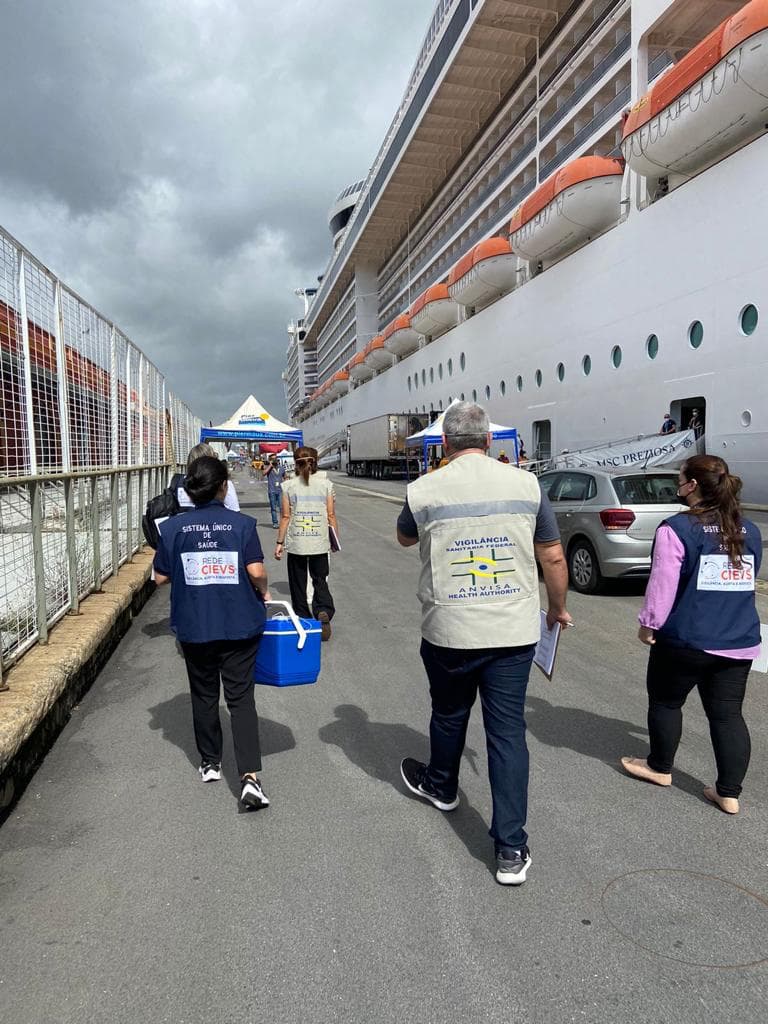

The teams also encouraged additional measures on the ship to prevent further spread, including mandatory mask use, social distancing and health guidelines. The cruise ship’s health professionals also encouraged passengers to participate in a flu vaccination drive on December 18. (The cruise line had encouraged but did not require travelers to get vaccinated against the flu before embarking.)
The Rio de Janeiro state government released further guidelines for COVID-19 protocols during the 2021-2022 season.16 All passengers had to show proof of vaccination against COVID-19 and present a negative PCR test prior to boarding. The ship’s maximum capacity was set to 75% of its total, with increased spacing between groups of travelers and weekly testing required for crew members. These measures, a reinforcement of the previous cruise ship guidance, promoted stronger vigilance among both passengers and crew members about the spread of viral disease—whether COVID-19 or the flu.
On December 28, 2021, ten days after the field investigations began, the outbreak was declared over. No new cases were confirmed; there were no hospitalizations and none of the passengers had been infected. Unlike in the events from 2000 and 2009, early detection among the crew prevented the flu from spreading to passengers.
With the ship’s passengers returning to their homes all around the world, stopping the flu at those three crew members reduced global spread.
Key Preparedness Factors
- Risk Assessment & Planning
- Emergency Response Operations
- National Laboratory System
- Disease Surveillance
- National Legislation Policy & Financing
- Human Resources
- Risk Communications
 Tourism and Health Information System (THiS)
Tourism and Health Information System (THiS)
Tourist destinations are particularly vulnerable to the spread of infectious diseases, with people from all over the world travelling to and from sites. In the tourism-dependent Caribbean, the Caribbean Public Health Agency (CARPHA) has implemented a novel approach to surveilling disease in these hotspots: the Tourism and Health Information System (THiS). The web-based system enables hotels to monitor symptoms and potential diseases; certain infectious diseases trigger alerts that go straight to the country’s National Ministry of Health.17 Thus far, the approach is being used in hotels and guest houses in the Bahamas, Barbados, Belize, Guyana, Jamaica, Trinidad and Tobago, Bermuda and Turks and Caicos.18
Bottleneck
An outbreak response is multifaceted and coordinated across a range of sectors and actors. Relative weaknesses can lead to bottlenecks that delay or otherwise impair response efforts. These bottlenecks can be identified via after-action reviews and are valuable intel for improving future response efforts.
Facilitator
A disaster never happens because a single thing goes wrong. Bottlenecks or other system weaknesses are often balanced by facilitators—factors that strengthen response efforts. Facilitators can also be identified via after-action reviews and may be the direct result of system improvements following the identification of bottlenecks.
References
- Centers for Disease Control and Prevention. (2022, September 20). How Flu Spreads. https://www.cdc.gov/flu/about/disease/spread.htm
- Centers for Disease Control and Prevention. (2022, August 25). Flu Symptoms & Complications. https://www.cdc.gov/flu/symptoms/symptoms.htm
- World Health Organization. (2019, March 11). WHO Launches New Global Influenza Strategy. https://www.who.int/news/item/11-03-2019-who-launches-new-global-influenza-strategy
- Centers for Disease Control and Prevention. (2019, March 20). 1918 Pandemic (H1N1 virus). https://www.cdc.gov/flu/pandemic-resources/1918-pandemic-h1n1.html
- Centers for Disease Control and Prevention. (2010, August 11). 2009 H1N1 Flu. https://www.cdc.gov/h1n1flu/
- Nobusawa E, Sato K. (2006). Comparison of the Mutation Rates of Human Influenza A and B Viruses. Journal of Virology, 80(7), 3675-3678. https://doi.org/10.1128/JVI.80.7.3675-3678.2006
- Marshall CA, Morris E, Unwin N. (2016). An Epidemiological Study of Rates of Illness in Passengers and Crew at a Busy Caribbean Cruise Port. BMC Public Health. 16, 314. https://doi.org/10.1186/s12889-016-2991-3
- Peake DE, Gray CL, Ludwig MR, et al. (1999). Descriptive Epidemiology of Injury and Illness among Cruise Ship Passengers. Annals of Emergency Medicine, 33(1), 67–72. https://doi.org/10.1016/s0196-0644(99)70419-1
- Hill CD. (2019). Cruise Ship Travel. Travel Medicine, 377–382. https://doi.org/10.1016/B978-0-323-54696-6.00040-9
- Hirve S, Newman LP, Paget J, et al. (2016). Influenza Seasonality in the Tropics and Subtropics – When to Vaccinate? Plos One. https://doi.org/10.1371/journal.pone.0153003
- Brotherton JM, Delpech VC, Gilbert GL, et al. (2003). A Large Outbreak of Influenza A and B on a Cruise Ship Causing Widespread Morbidity. Epidemiology and Infection, 130(2), 263–271. https://doi.org/10.1017/s0950268802008166
- Ward KA, Armstrong P, McAnulty JM. (2010). Outbreaks of Pandemic (H1N1) 2009 and Seasonal Influenza A (H3N2) on Cruise Ship. Emerging Infectious Diseases, 16(11), 1731–1737. https://doi.org/10.3201/eid1611.100477
- Greenberg K. ‘I did not feel safe’: Carnival Cruise Overwhelmed with COVID Cases, Passengers Say. (2022, May 3). King 5 Seattle. https://www.king5.com/article/news/local/seattle/cruise-covid-19-positive-passengers-seattle/281-39e9ae51-79f1-4fc6-9de4-42faa1cee184
- Brazil Says Cruise is a Go, 2021-2022 Season Is On. (2021, October 4). Cruise Industry News. https://www.cruiseindustrynews.com/cruise-news/25969-brazil-says-cruise-is-a-go-2021-2022-season-is-on.html
- Federative Republic of Brazil, Ministry of Health, National Health Surveillance Agency. (2016, October 24). Ministry of Health. https://www.gov.br/anvisa/pt-br/centraisdeconteudo/publicacoes/portos-aeroportos-e-fronteiras/guias-e-manuais/guia-sanitario-de-navios-cruzeiros.pdf/view
- Rio de Janeiro State Government, State Health Department, Undersecretary of Surveillance and Primary Health Care. Operational Plan for the 2021-2022 Cruise Season in the State of Rio de Janeiro. https://www.saude.rj.gov.br/comum/code/MostrarArquivo.php?CP=46766
- Edwin J, Indar L, Asin-Oostburg V. (2018). Tourism and Health Information System (THiS) in the Caribbean, June-September 2017. Online Journal of Public Health Informatics, 10(1), e184. https://doi.org/10.5210/ojphi.v10i1.8976
- Caribbean Public Health Agency. THiS Hotel Based Surveillance. https://carpha.org/THP/THiS-Hotel-Based-Surveillance

